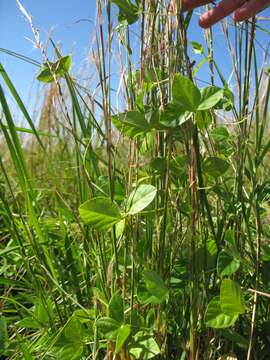Vigna parkeri habit9

Description:
Summary.mw-parser-output table.commons-file-information-table,.mw-parser-output.fileinfotpl-type-information{border:1px solid #a2a9b1;background-color:#f8f9fa;padding:5px;font-size:95%;border-spacing:2px;box-sizing:border-box;margin:0;width:100%}.mw-parser-output table.commons-file-information-table>tbody>tr,.mw-parser-output.fileinfotpl-type-information>tbody>tr{vertical-align:top}.mw-parser-output table.commons-file-information-table>tbody>tr>td,.mw-parser-output table.commons-file-information-table>tbody>tr>th,.mw-parser-output.fileinfotpl-type-information>tbody>tr>td,.mw-parser-output.fileinfotpl-type-information>tbody>tr>th{padding:4px}.mw-parser-output.fileinfo-paramfield{background:#ccf;text-align:right;padding-right:0.4em;width:15%;font-weight:bold}.mw-parser-output.commons-file-information-table+table.commons-file-information-table,.mw-parser-output.commons-file-information-table+div.commons-file-information-table>table{border-top:0;padding-top:0;margin-top:-8px}@media only screen and (max-width:719px){.mw-parser-output table.commons-file-information-table,.mw-parser-output.commons-file-information-table.fileinfotpl-type-information{border-spacing:0;padding:0;word-break:break-word;width:100%!important}.mw-parser-output.commons-file-information-table>tbody,.mw-parser-output.fileinfotpl-type-information>tbody{display:block}.mw-parser-output.commons-file-information-table>tbody>tr>td,.mw-parser-output.commons-file-information-table>tbody>tr>th,.mw-parser-output.fileinfotpl-type-information>tbody>tr>td,.mw-parser-output.fileinfotpl-type-information>tbody>tr>th{padding:0.2em 0.4em;text-align:left;text-align:start}.mw-parser-output.commons-file-information-table>tbody>tr,.mw-parser-output.fileinfotpl-type-information>tbody>tr{display:flex;flex-direction:column}.mw-parser-output.commons-file-information-table+table.commons-file-information-table,.mw-parser-output.commons-file-information-table+div.commons-file-information-table>table{margin-top:-1px}.mw-parser-output.fileinfo-paramfield{box-sizing:border-box;flex:1 0 100%;width:100%}} Description: English: Introduced, warm-season, perennial, prostrate, climbing legume, with stolons. Leaves have 3 leaflets, each hairy, 1-9 cm long, round to ovate. The central leaflet has a longer stalk than the lateral leaflets. Leaf size varies with grazing pressure. Flowerheads are racemes of 2-5, blue, 5-9 mm long, pea-like flowers in the leaf axils. Pods are straight sided, narrow, flattened and 1-3 cm long. Flowering is in summer and autumn. A native of Africa, it is sown for grazing on wide range of soils. Grows best on moist, fertile soils, but it will tolerate low fertility. It is tolerant of acidity, moderate levels of aluminium and light shade, but is sensitive to frost. Shaw is the only variety sown. Provides a good quality, high protein, non-bloating feed, it is of greatest value in late summer and autumn as the quality of pasture grasses declines. It is slow to establish and drought will kill it. Tolerates prolonged heavy grazing, but needs to be allowed to seed in the first and second year for longterm persistence. Grazing pressure should be sufficient to produce a low leafy stand as undergrazed stands develop severe leaf disease. Date: 27 April 2009, 13:43:35. Source: https://www.flickr.com/photos/73840284@N04/10736323464/. Author: Macleay Grass Man.
Included On The Following Pages:
- Life (creatures)
- Cellular (cellular organisms)
- Eukaryota (eukaryotes)
- Archaeplastida (plants)
- Chloroplastida (green plants)
- Streptophyta
- Embryophytes
- Tracheophyta (ferns)
- Spermatophytes (seed plants)
- Angiosperms (Dicotyledons)
- Eudicots
- Superrosids
- Rosids
- Fabales ("An order: peas, beans, and relatives")
- Fabaceae (legumes)
- Vigna (cowpea)
- Vigna parkeri
This image is not featured in any collections.
Source Information
- license
- cc-by-3.0
- copyright
- Macleay Grass Man
- creator
- Macleay Grass Man
- source
- Harry Rose (73840284@N04)
- original
- original media file
- visit source
- partner site
- Wikimedia Commons
- ID


